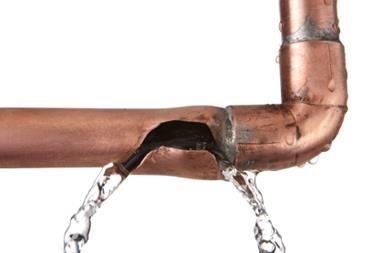Specialist church and historic buildings insurer Ecclesiastical says that 2011 was the worst year to date for metal theft
Manchester Cathedral has become the latest victim of the UK metal theft epidemic, with the widely reported news today that it is having to pass around the collection plate to pay for recent losses.
Many are fairly small scale, not qualifying for the £2,500 excess policy that it has with Ecclesiastical.
However, the cathedral’s woes shed a fresh spotlight on a problem that is hitting insurers squarely in the pocket.
Far East pressure hits local level
The boom in the Far Eastern economies has pushed up the cost of raw materials, like copper and iron, in recent years, helping Australia escape the recession which has engulfed the rest of the western world. On a smaller level, the rising cost of such commodities has played into the hands of thieves.
The metal theft boom has hit Ecclesiastical harder than anybody else. The specialist churches and historic buildings insurer reported that 2011 was the worst year ever for metal theft, with more than 2,500 claims logged. This figure was even greater than the 2,400 recorded in 2008.
But while 2008 was during the global recession that had fuelled the spike in such thefts, 2011 was by no means such a golden year for the world economy.
The cooling in the emerging economies that many are forecasting for 2012 may depress demand for scrap metal, providing some relief. However last year’s figures indicate that metal theft has become an endemic problem for society, requiring new measures to tackle it.
The Church of England has called on the Home Office to introduce better regulation of scrapyards. At the moment, the cash-based nature of scrapyard transactions means that it is all too easy for thieves to find a buyer for their ill-gotten gains.
A Labour MP from the north west, the region that has seen some of the biggest increases in metal theft, has tabled a bill in parliament to tackle this issue.
But the government itself needs to act promptly before the problem becomes too big for the insurance industry to cover cost-effectively.
Motor premium hikes set to continue
It looked for a while as if the big motor premium hikes were petering out. The AA figures for the third quarter of 2011 had seen a slight fall, confirming a trend picked up in other surveys.
But the latest AA Shoparound index, which covers the final quarter of 2011, shows that rates rose 5.4%, fuelling a 15.3% increase over the whole of the year.
The Shoparound Index that is based on the three cheapest deals on offer in the market shows that the cheapest motor insurance deals are a fast-disappearing species.
The underlying drivers of recent increases are still in place, chiefly the continuing rise in bodily injury claims.
Statistics published in this week’s Insurance Times show that the volume of personal injury claims recorded by the government’s own Compensation Recovery Unit were up by about one-sixth in 2010-11 to 790,999.
And while the government is taking steps to curb the “no win, no fee” legal costs that have helped to fuel this increase in claims, these are unlikely to translate soon into reductions in the number of claims.
Sabre Insurance chairman Keith Morris, when making his New Year predictions, said 2012 was likely to see double digit motor rate increases. The AA figures show that he will probably be right.
Hosted by comedian and actor Tom Allen, 34 Gold, 23 Silver and 22 Bronze awards were handed out across an amazing 34 categories recognising brilliance and innovation right across the breadth of UK general insurance.












































No comments yet